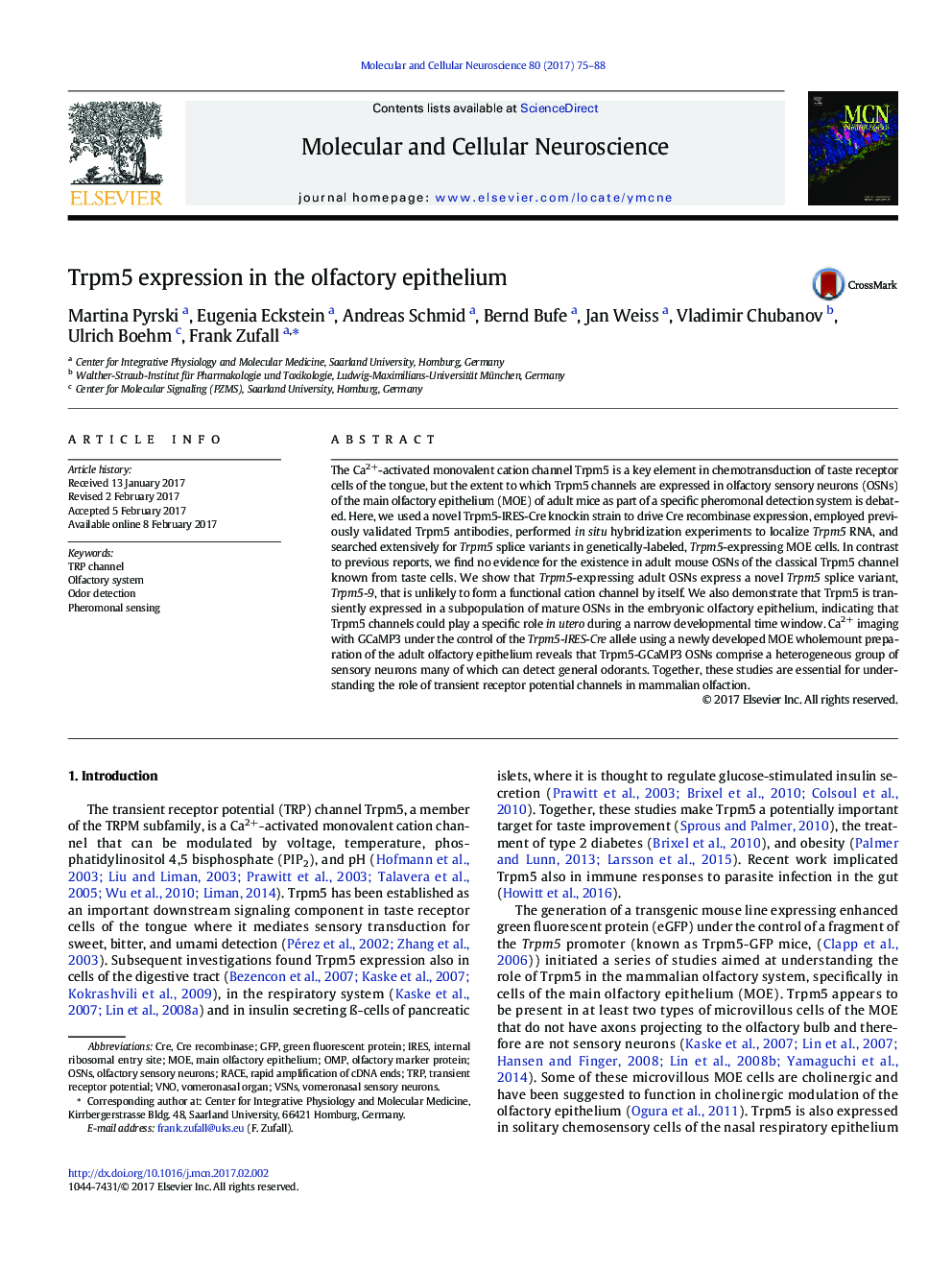| Article ID | Journal | Published Year | Pages | File Type |
|---|---|---|---|---|
| 5534382 | Molecular and Cellular Neuroscience | 2017 | 14 Pages |
â¢In the olfactory epithelium of adult mice, the classical variant Trpm5-1 is absent from olfactory sensory neurons.â¢The novel splice variant Trpm5-9 exists in mature olfactory sensory neurons.â¢In situ Ca2+ imaging in Trpm5-GCaMP3 OSNs reveals a heterogeneous group of sensory neurons.â¢Trpm5 protein is transiently expressed in OSNs of the embryonic olfactory epithelium in utero.
The Ca2+-activated monovalent cation channel Trpm5 is a key element in chemotransduction of taste receptor cells of the tongue, but the extent to which Trpm5 channels are expressed in olfactory sensory neurons (OSNs) of the main olfactory epithelium (MOE) of adult mice as part of a specific pheromonal detection system is debated. Here, we used a novel Trpm5-IRES-Cre knockin strain to drive Cre recombinase expression, employed previously validated Trpm5 antibodies, performed in situ hybridization experiments to localize Trpm5 RNA, and searched extensively for Trpm5 splice variants in genetically-labeled, Trpm5-expressing MOE cells. In contrast to previous reports, we find no evidence for the existence in adult mouse OSNs of the classical Trpm5 channel known from taste cells. We show that Trpm5-expressing adult OSNs express a novel Trpm5 splice variant, Trpm5-9, that is unlikely to form a functional cation channel by itself. We also demonstrate that Trpm5 is transiently expressed in a subpopulation of mature OSNs in the embryonic olfactory epithelium, indicating that Trpm5 channels could play a specific role in utero during a narrow developmental time window. Ca2+ imaging with GCaMP3 under the control of the Trpm5-IRES-Cre allele using a newly developed MOE wholemount preparation of the adult olfactory epithelium reveals that Trpm5-GCaMP3 OSNs comprise a heterogeneous group of sensory neurons many of which can detect general odorants. Together, these studies are essential for understanding the role of transient receptor potential channels in mammalian olfaction.
